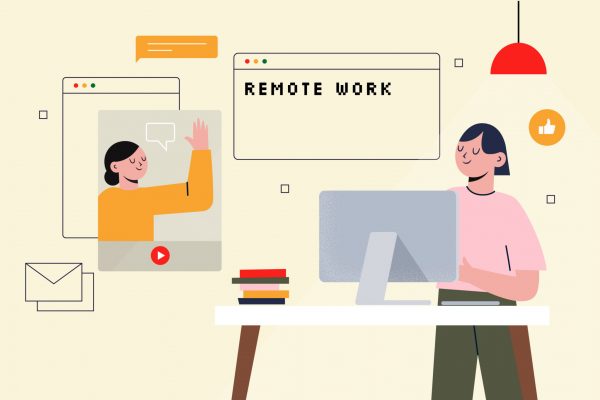Much
has been written lately about the “great remote-work experiment” we are in the
middle of. In an article in the Enterprisers
Project,
Korn Ferry CEO Gary Burnison urges business leaders to approach it as an
“invitation to think more broadly about an organization’s future business
model… It could be the surprising silver lining to this crisis.”
Similarly,
a San Diego
Union-Tribune piece highlights how efficiency and productivity concerns are stirring
up anxiety—for organizations and for employees. Some organizations just aren’t
ready to let go of the idea that attendance equals productivity and, as a
result, have been “scrambling to buy software that tracks worker behavior using
their own web cameras,” according to the article. As for employees, many have
been trying to balance the competing demands of their personal and professional
lives—not an easy task considering that the boundary between the two has nearly
disappeared.
Business models and management styles are important concerns, but they are not the only factors at play in this experiment. One element that’s often left out of the remote-work conversation is the critical relationship between productivity and learning.
One element that’s often left out of the remote-work conversation is the critical relationship between productivity and learning.
The
health and well-being of workers is the top priority today, but learning is
also essential, no matter where workers are based. It’s even more important now
that many employees are disconnected, distracted, and running the risk of
becoming disengaged. In addition, to see the benefits of learning,
organizations must do more than just “support” it—they need to champion it.
Consider some of the recent research:
- 83 percent of L&D pros say their executives support employee learning, but only 27 percent of L&D pros say their CEOs are active champions of learning.1
- Buy-in from management is a key factor in employee engagement and receptiveness to change, which includes learning. According to change management firm Prosci, an “active and visible executive sponsor” has been number one on its list of seven change management best practices for the past 20 years.2
- Companies rated highly for employee training have less turnover—in LinkedIn’s study, those organizations experienced 53 percent lower employee attrition.
Before
COVID-19, a growing number of organizations had begun to accept the idea that training
is essential and were exploring how to deliver it effectively. When the
pandemic hit, priorities changed.
In
an April 10
Harvard Business Review article, INSEAD’s Annie Peshkam and Gianpiero Petriglieri take a look at
this sudden priority shift. Many companies went into “survival mode”—cutting
learning budgets, canceling training and coaching sessions, and putting major
learning initiatives on hold.
“This
is dangerous,” they write. “Like all major crises, and perhaps more than most,
the COVID-19 pandemic is bound to leave behind lasting changes in the way work
and business take place. Learning will be the foundation of our survival, then,
for both organizations and the individuals who make them up.”
To
be sure, work will not simply “snap back” after the COVID-19 pandemic.
According to Peshkam and Petriglieri, for organizations to survive, they will
need to be nimble, observant, and attentive to their customers’ needs. They
will need to change. To do so, they must figure out how to keep their employees
focused, engaged and innovative.
When
you think about it, it’s quite like what’s been happening with digital
transformation over the past decade—only faster, much faster. If you are among
the many organizations that had already begun their digital transformation
journeys, think of your pre-COVID-19 efforts as a rehearsal. Today you are
live—make it count.
Image: Designed by Freepik | http://www.freepik.com
1. LinkedIn 2020 Workplace Learning Report | 2. Best Practices in Change Management, Prosci











